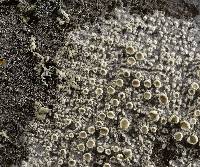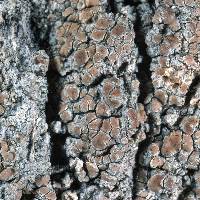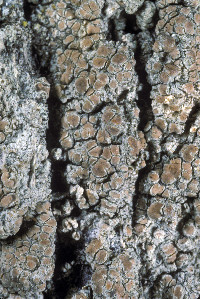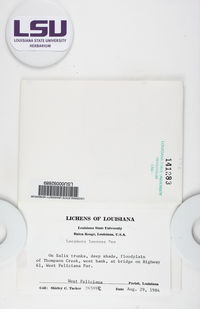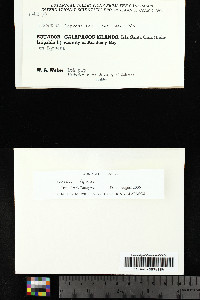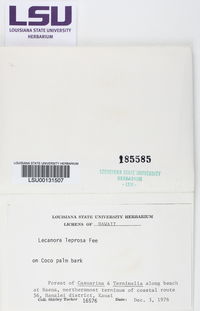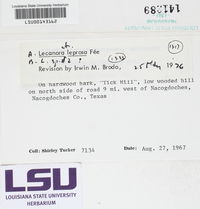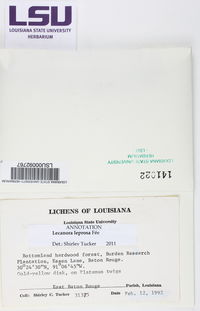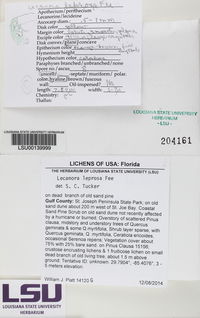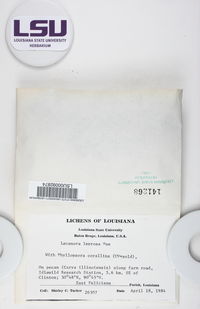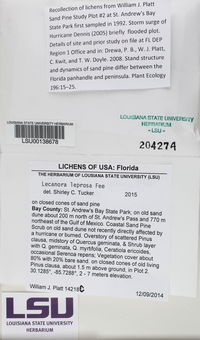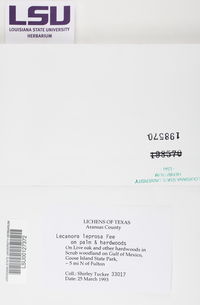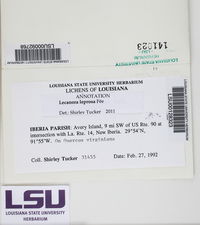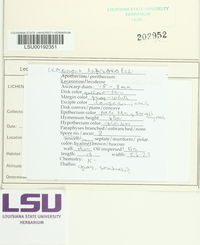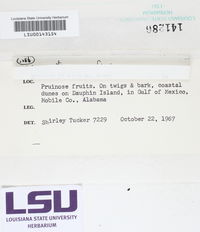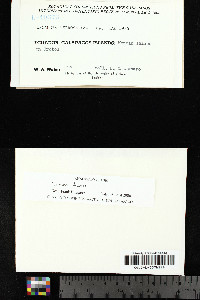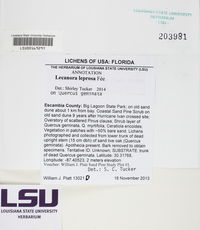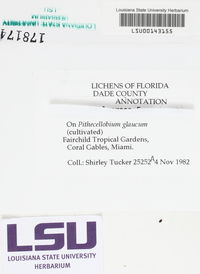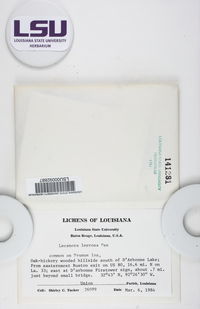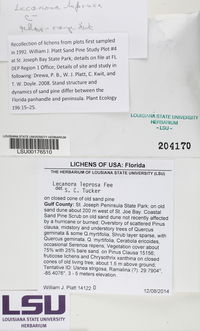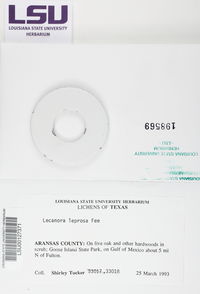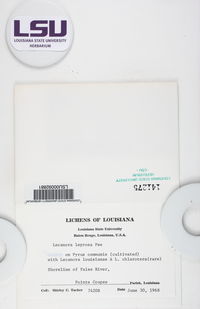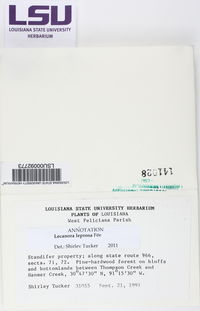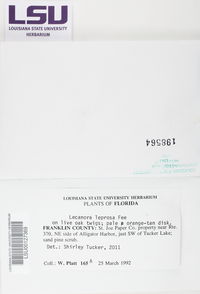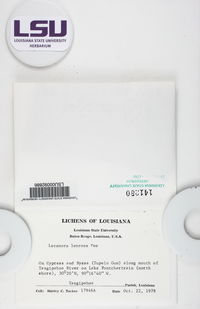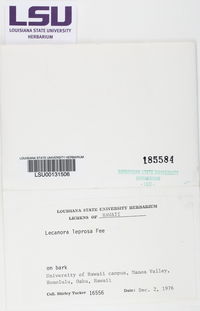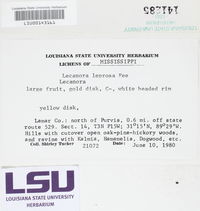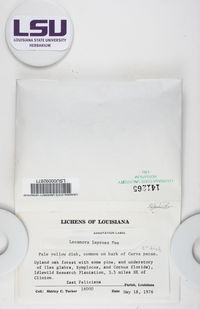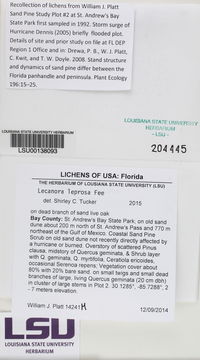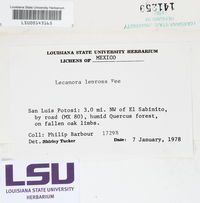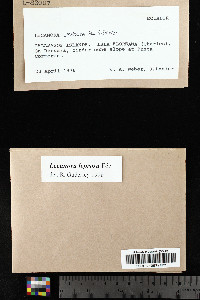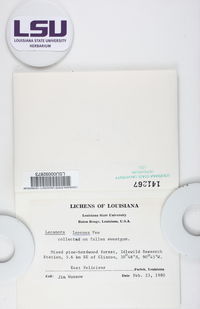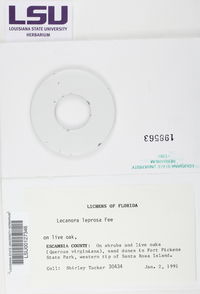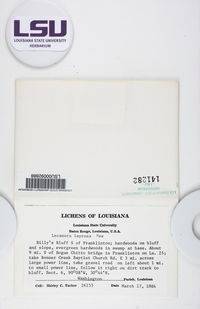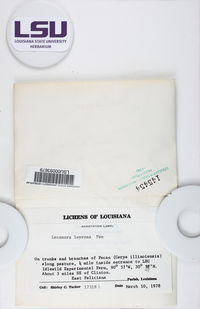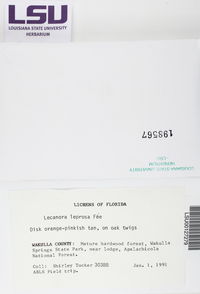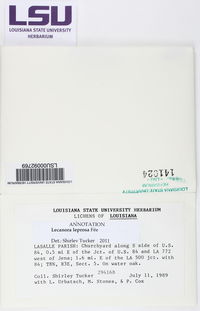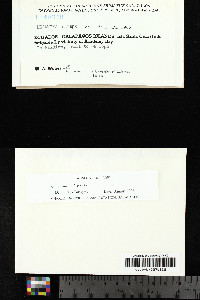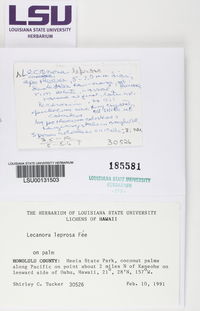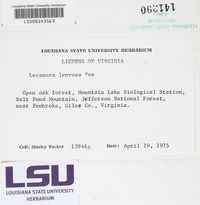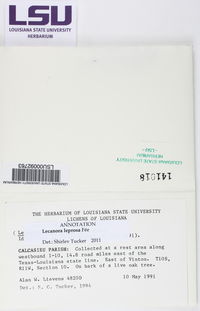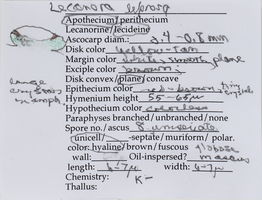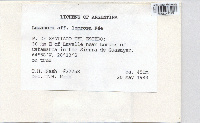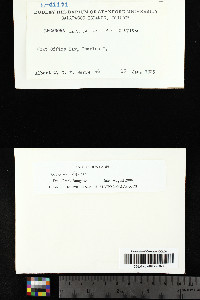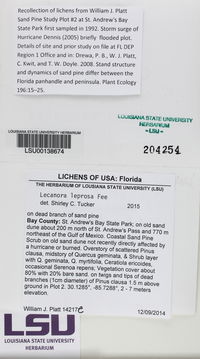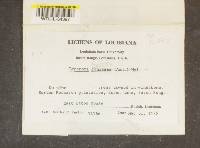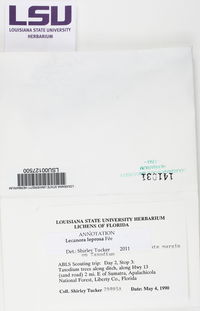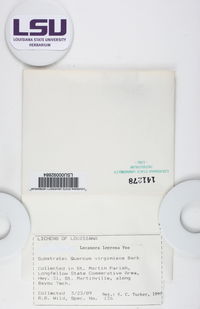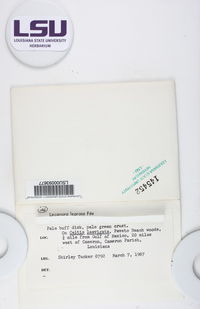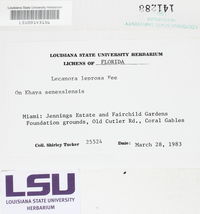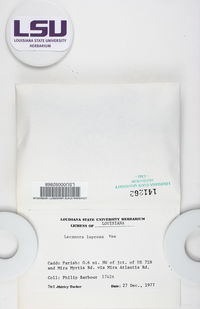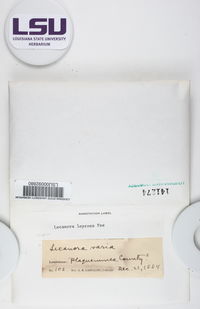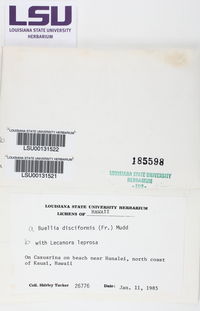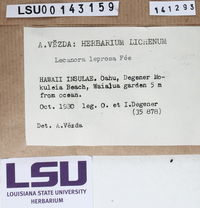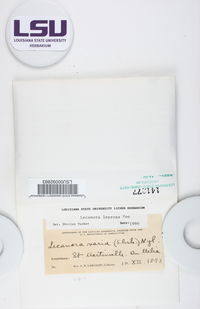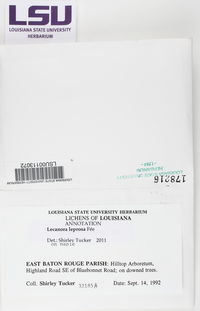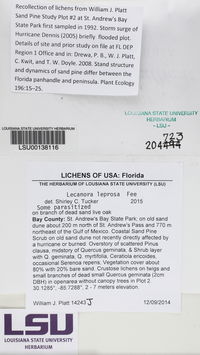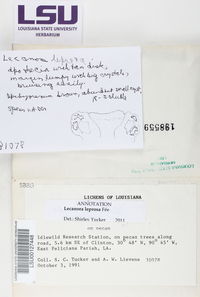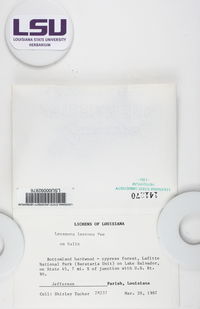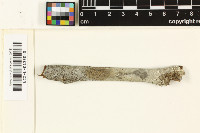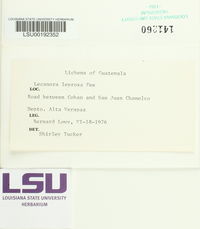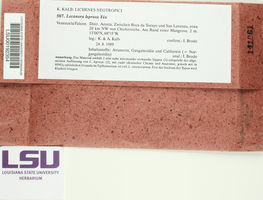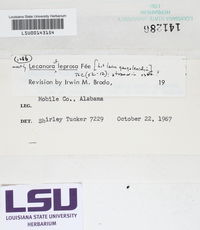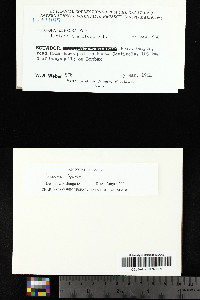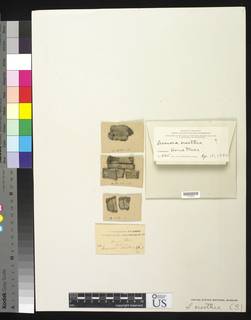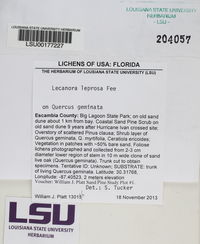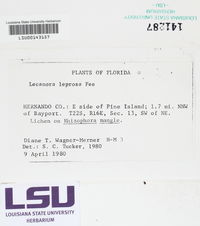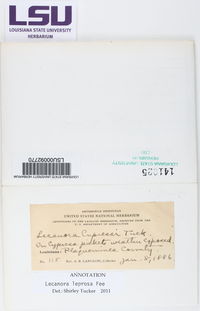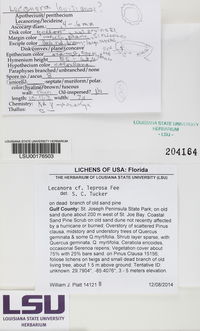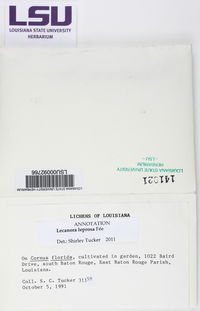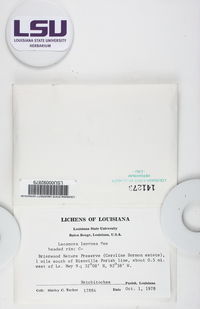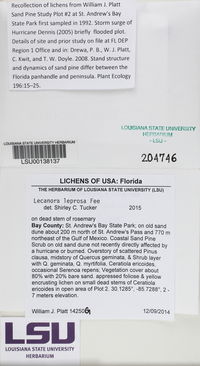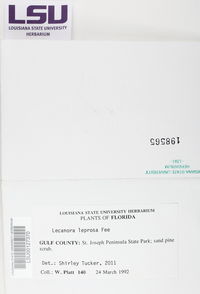
- Home
- Search
- Images
- Species Checklists
- US States: O-Z >
- US National Parks
- Central America
- South America
- US National Parks
- Southern Subpolar Region
|
|
|
|
Family: Lecanoraceae
|
MycoBank no. 122743 Type: Brasil. Rio de Janeiro: Rio de Janeiro, exact locality unknown, sine dato, Glaziou, A.F.M 1921 (PC-Feé–neotype selected by Lumbsch & Elix 1993). Description. Thallus corticolous, thin to moderately thickened, areolate to granular areolate, initially developing from isolated areoles on a whitish arachnoid hypothallus, areoles with age becoming contiguous; surface white to pale gray or pale greenish gray, smooth to slightly dull and ±verruculose, matt, epruinose, lacking soredia; prothallus well developed, whitish arachnoid or forming a blackened line, especially where different thalli meet. Apothecia numerous, often very densely aggregated, circular to slightly irregular in outline, 0.3–0.8 mm in diam., semi-immersed to adnate, or sessile, typically crowded, soon lecanorine with persistent, entire, rarely slightly crenate, epruinose margin, concolorous with the thallus; disc ±plane, yellowish orange to brownish orange, epruinose; hymenium hyaline, not inspersed, epihymenium with crystals, almost hyaline to pallid yellowish brown (elachista-brown: dissolving in K, HCl± dull greenish, N−), both pigment and crystals soluble in K (chlarotera-type); proper exciple thin, indistinct, with few crystals; thalline exciple thick, distinctly corticate, with few small crystals soluble in K, and conspicuous large crystals, insoluble in K (pulicaris-type); subhymenium hyaline, hypothecium hyaline to faintly pale brown; ascospores 8/ascus, simple, narrowly to broadly ellipsoid, (6.9)–8.9–11.8–(13.9) × (4.0–)4.5–5.9(–6.9) μm (n = 45). Pycnidia not seen. Chemistry. Thallus cortex including apothecial margin P+ yellow, K+ yellow, C−, KC−; Galapagos specimens with atranorin [major], gangaleoidin [major], ±leoidin [minor]. According to Guderley (1999) the species contains atranorin, chloroatranorin, gangaleoidin, norgangaleoidin, chlorolecideoidin, ±leoidin [all specimens cited were analyzed with TLC]. Ecology and distribution. Pantropical (North and South America, Africa, Asia, Australia and Oceania); among the most common lichen epiphytes in the Galapagos, especially in the coastal, dry and transition zone, rarely also in the humid zone, on bark of native and endemic trees and shrubs (Bursera, Croton, Hippomane, Psidium, Piscidia, Zanthoxylum, etc.), also on wood, or on cacti (Jasminocereus thouarsii). Notes. Lecanora leprosa is among the most common corticolous species of Lecanora throughout the Galapagos. The distinction between this species and the saxicolous L. sulfurescens is problematic. According to Guderley (1999) both have the same exciple type, but different epihymenia. He describes the epihymenium of L. leprosa as chlarotera-type and assigns the epihymenium of L. sulfurescens to the pulicaris-type. He also suggests that the epihymenial crystals are soluble in both species. According to Guderley (1999) the two taxa would thus differ only by their epihymenial pigmentation: soluble in L. leprosa, insoluble in L. sulfurescens. Lumbsch & Elix (1993), however, report crystals insoluble in K in the epihymenium of L. sulfurescens while Ryan et al. (2004) state that L. sulfurescens, like L. leprosa, has epihymenial crystals and pigmentation that both dissolve in K. Nash, T.H., Ryan, B.D., Gries, C., Bungartz, F., (eds.) 2004. Lichen Flora of the Greater Sonoran Desert Region. Vol 2. Thallus: crustose, continuous or rimose-areolate or verrucose-areolate; prothallus: not visible, or white areoles: flat or verrucose or verruculose, thin, opaque, ecorticate surface: yellowish white to yellowish gray or yellowish green, smooth, epruinose, with an indistinct margin, esorediate Apothecia: subimmersed when young, sessile when mature or sessile, 0.3-0.8 mm in diam., lecanorine disc: orange-brown or yellowish brown, plane, epruinose margin: concolorous with thallus, thin or thick, persistent or becoming excluded, even, not flexuose, smooth, entire or verrucose or verruculose, without a parathecial ring amphithecium: present, with numerous algal cells, with large crystals insoluble in K, corticate; cortex: hyaline, indistinct, basally not thickened, interspersed, (10-)17-25(-26) µm thick laterally, 10-25 µm thick basally parathecium: hyaline, containing crystals insoluble in K epihymenium: red-brown to orange-brown, with pigment dissolving in K, with crystals dissolving in K hymenium: hyaline, clear; paraphyses: not thickened or slightly thickened (up to 2.5 µm wide) apically, not pigmented; subhymenium: hyaline, 15-20 µm thick; hypothecium: hyaline or pale yellow to yellowish brown, without oil droplets asci: clavate, 8spored ascospores: hyaline, simple, ellipsoid or narrowly ellipsoid, (9-)9.5-13.5(-14) x (5-)6-7(-7.5) µm; wall: less than 1 µm thick Pycnidia: immersed, cerebriform; conidiophores: type II sensu Vobis conidia: filiform, 15-19 µm long Spot tests: thallus and apothecial margin K+ yellow, C-, KC-, P+ pale orange Secondary metabolites: atranorin (major), chloroatranorin (minor), chlorolecideoidin (minor), gangaleoidin (major), leoidin (minor) and norgangaleoidin (minor). Substrate and ecology: on bark of deciduous trees World distribution: pantropical, known from Africa, Asia, Australasia, North and South America, and the Pacific area Sonoran distribution: Sinaloa. Notes: Lecanora leprosa is characterized by its orange to yellowish brown apothecial discs, its granulose epihymenium and the presence of the gangaleoidin chemosyndrome. It is similar to L. achroa and L. helva. The differences are discussed under these species. |
|
|
|



